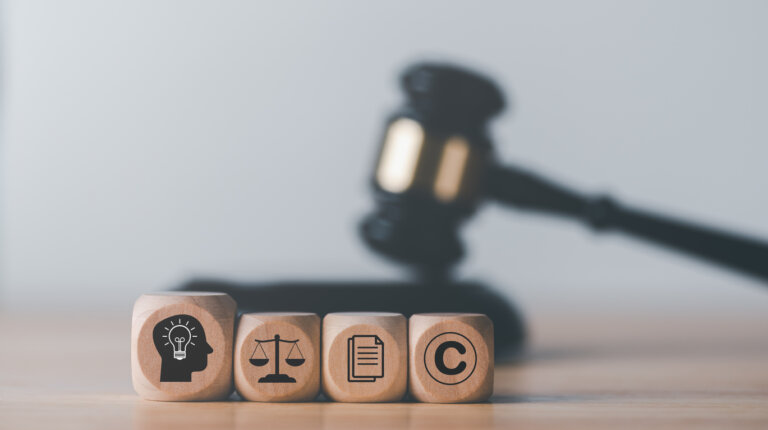Understanding Biotechnology Patents
Biotechnology patents play an essential role in protecting innovations and driving advancements in the field. They provide inventors with legal rights to their creations and allow them to control how others use or share their work. In biotechnology, patents encourage investment and support research by ensuring inventors can benefit from their ideas. This protection incentivizes further discoveries by helping companies and individuals recover their development costs.
Patents are one of several types of intellectual property (IP) that protect different aspects of innovation. Here’s an overview of the different types of IP protections:
- Patents: Patents protect new inventions, processes, or improvements. In biotechnology, patents cover innovations such as genetically engineered organisms, new drug formulations, medical devices, and diagnostic methods. Patents give inventors exclusive rights to make, use, sell, or license their inventions for a set period, typically 20 years.
- Trademarks: Trademarks protect brand names, logos, slogans, or symbols that distinguish products or services in the marketplace. In biotechnology, trademarks might protect a company’s name or a branded medical product so consumers can identify the source of a product and verify its quality.
- Copyrights: Copyrights protect original works of authorship, such as written documents, digital databases, or computer code. In biotechnology, copyrights might apply to software used in research or publications that document discoveries.
- Trade Secrets: Trade secrets protect confidential business information, such as proprietary formulas, manufacturing techniques, or research methods, that provide a competitive advantage. Unlike patents, trade secrets do not require registration. However, they only provide protection if they remain undisclosed.
Each type of IP protection serves a specific need and can work with other types to provide comprehensive protection for biotechnology innovations. A patent lawyer can assist you in identifying the right strategies to secure these rights and ensure their proper use.
Key Requirements for Biotech Patents
Obtaining a biotechnology patent requires meeting specific legal and technical criteria. These criteria aim to ensure patents protect genuine innovations and promote progress in the field. Let’s review some patentability criteria from the US Patent and Trademark Office (USPTO):
- Novelty: The invention must be new. It cannot have been disclosed or made available to the public in any form before the patent application filing date. For example, if a research paper or presentation includes the invention, it will not qualify as novel.
- Non-Obviousness: The invention must not be obvious to someone skilled in the field. If the improvement or development seems like a logical step based on existing knowledge, it will likely fail to meet this requirement.
- Utility: The invention must serve a useful purpose. In biotechnology, this often means demonstrating a clear application, such as medical, agricultural, or industrial use. Without practical value, the invention cannot qualify for patent protection.
Biotechnology patents can cover a wide range of innovations. Genetic material, such as engineered DNA sequences or RNA molecules, qualifies for patent protection if it meets the requirements of novelty, non-obviousness, and utility. Modified microorganisms, like bacteria engineered for medical, agricultural, or environmental applications, can also be patented. Additionally, inventors can protect biotechnological processes and methods, including gene-editing techniques, drug manufacturing processes, or cell manipulation methods.

Drafting & Filing Process
The drafting and filing process for biotechnology patents requires careful planning and attention to detail. Each step is critical to securing robust IP protection. Here are the key steps involved:
- Understand the Invention: The process begins with a thorough review of the invention. Inventors and legal professionals work together to understand the technical details and potential applications of the biotechnology invention.
- Conduct a Prior Art Search: Before drafting, inventors must identify existing patents, publications, and other disclosures to ensure the invention is novel. This can prevent potential conflicts or rejections during the examination process.
- Draft the Patent Application: The application must include a detailed description of the invention, its components, and how it works. Careful wording is essential in defining the scope of the invention to avoid overly broad or narrow claims.
- Include Supporting Drawings: High-quality drawings often accompany written application descriptions to provide visual clarity. These drawings can illustrate structures, processes, or sequences related to the invention.
- Submit the Application: After drafting, the application must be filed with the United States Patent and Trademark Office (USPTO) or a relevant international authority, depending on the desired scope of protection.
An invention disclosure is another important part of the patent drafting and filing process. This document outlines the key features of the invention and provides critical details about its design, function, and potential applications. The inventor provides this information to their legal team at the start of the process. A complete and accurate disclosure is necessary for the patent application to capture the invention’s full scope. It also helps identify any potential patentability issues early, which can save time and resources later.
Strategic Considerations in Biotech Patenting
Biotechnology patents provide valuable protection, but inventors must consider several strategic factors before pursuing them.
On the commercial side, inventors must evaluate the market potential of their inventions. Patents can create opportunities to license technology, attract investors, or gain a competitive edge in the marketplace. However, inventors must align their patenting strategies with their business objectives. For example, securing a patent could support plans to launch a new product or protect a unique process used in production. In addition, inventors should consider whether their inventions can complement existing products or fill gaps in the market.
The costs of patent protection also require consideration. Filing a patent application involves attorney fees, government filing fees, and potential costs for drawings or translations for international filings. If the patent office issues objections or rejections, more expenses can arise during the examination process. Additionally, maintaining a patent after approval requires paying periodic renewal fees. These costs increase if inventors seek protection in multiple countries, as international patent filings involve additional fees.
Biotech inventors must balance these costs with the potential commercial benefits of patent protection. A strong patent portfolio can create significant value, but inventors need clear plans to manage expenses while maximizing returns. A patent lawyer can provide guidance to help create a cost-effective strategy for securing and enforcing your patents.

Ethical and Social Considerations
Biotechnology and life science patents raise important ethical and social questions, particularly regarding access to medicine, licensing practices, and environmental impact.
Access to medicine is a critical concern in biotechnology patenting. Patents grant inventors exclusive rights, which can influence the availability and affordability of life-saving treatments. Companies must balance the need to recover research and development costs with the broader goal of facilitating global access to essential medicines. Licensing strategies play a key role in this endeavor. For instance, inventors can make treatments accessible in low-income regions without undermining commercial goals by offering voluntary licenses or tiered pricing models.
The environmental impact of patented biotech inventions also demands careful consideration. Many biotech innovations, such as genetically modified organisms (GMOs), agricultural technologies, or biofuels, directly affect ecosystems and natural resources. Inventors should evaluate how their innovations might interact with the environment and consider adopting the most sustainable practices possible. For example, agricultural science products can reduce pesticide use, but they also raise concerns about biodiversity and long-term ecological effects. Transparent communication and collaboration with environmental experts is an excellent way to address these concerns responsibly.
Inventors and companies must integrate ethical and social considerations into their patent strategies. A knowledgeable patent lawyer can help you align these goals with a practical and compliant approach to protecting your intellectual property.
International Perspectives on Biotech Patents
Biotechnology patent laws differ across countries, which creates both challenges and opportunities for inventors seeking global protection.
In the United States, the USPTO reviews patent applications under specific criteria: novelty, non-obviousness, and utility. US law allows patents on a broad range of biotech innovations, including genetically modified organisms, isolated genetic sequences, and biotech processes. The Supreme Court ruling in Association for Molecular Pathology v. Myriad Genetics restricted patents on naturally occurring DNA, but synthetic or modified genetic materials remain eligible for protection. The US system provides robust enforcement mechanisms that allow patent holders to file lawsuits and demand compensation for infringement.
In contrast, the European Union uses the European Patent Office (EPO) to handle patent applications across its member states. The EPO also requires novelty, inventive step (non-obviousness), and industrial application (utility) for patent eligibility. European laws permit patents on genetically modified organisms and biotech processes, but they include stricter rules regarding ethics and morality. For example, European regulations prohibit patents on human embryos or processes involving their destruction, which can affect certain biotech innovations.
Inventors must manage these differences carefully when seeking international protection. Filing under the Patent Cooperation Treaty (PCT) allows inventors to submit a single patent application for multiple countries, but regional and local laws will still determine patentability. A patent attorney can help you develop a strategic approach to adapt to these variations and protect your biotech and life science innovations worldwide.

Why Choose Our Firm for Biotech Patents?
Protecting biotechnology inventions requires a legal team that understands the science behind your innovation and the complexities of patent law. At Gearhart Law, we bring decades of experience, client-focused strategies, and a passion for helping innovators succeed. Here’s why inventors, entrepreneurs, and businesses choose us for their biotech patent needs:
- Life Sciences Experience: Our team has extensive experience in life sciences, including biotech inventions such as genetically engineered organisms, medical devices, and diagnostic technologies. We understand the technical and legal challenges unique to this field and know how to craft strategies tailored to your invention. With our knowledge of the biotech industry’s specific needs, we can help you protect your innovations and maximize their commercial potential.
- Hands-On, Client-Focused Approach: We’ll work closely with you at every stage of the patent process, addressing your concerns and answering your questions as they arise. You’ll always have direct access to the lead attorney managing your case, so you can count on consistent communication and a clear understanding of your goals. We prioritize fostering strong client relationships to deliver legal services that fulfill your unique needs and set you up for long-term success.
- Proven Track Record: With nearly three decades of experience, we have successfully helped over 1,000 companies launch worldwide. Our clients range from first-time inventors to established global enterprises. Many return to us repeatedly because of our consistent results and trusted guidance.
- Comprehensive Patent Services: Our team provides full-service support, which includes conducting prior art searches, drafting detailed patent applications, handling international filings, and defending patent rights if disputes arise. We take a proactive approach to protect your innovations and offer guidance on navigating both domestic and global patent systems. Whether you aim to secure protection in the US only or expand globally, we’re here to help you safeguard your intellectual property effectively.
Contact a New Jersey Patent Attorney Now
You’ve worked hard on your biotechnology invention, and it deserves strong legal protection. At Gearhart Law, we are here to help you secure the patents you need to safeguard your work and create new opportunities. Contact us today to get started with your initial consultation and discuss how we can support your success.

